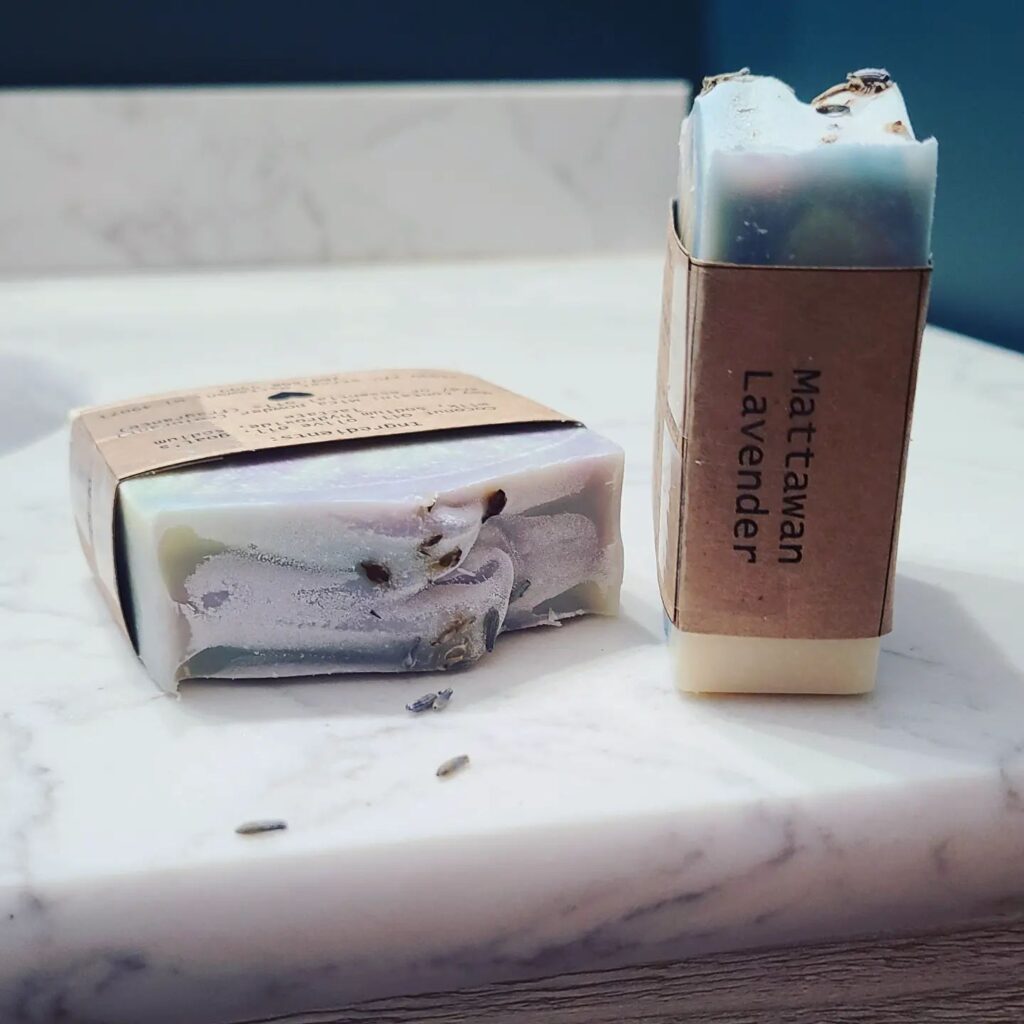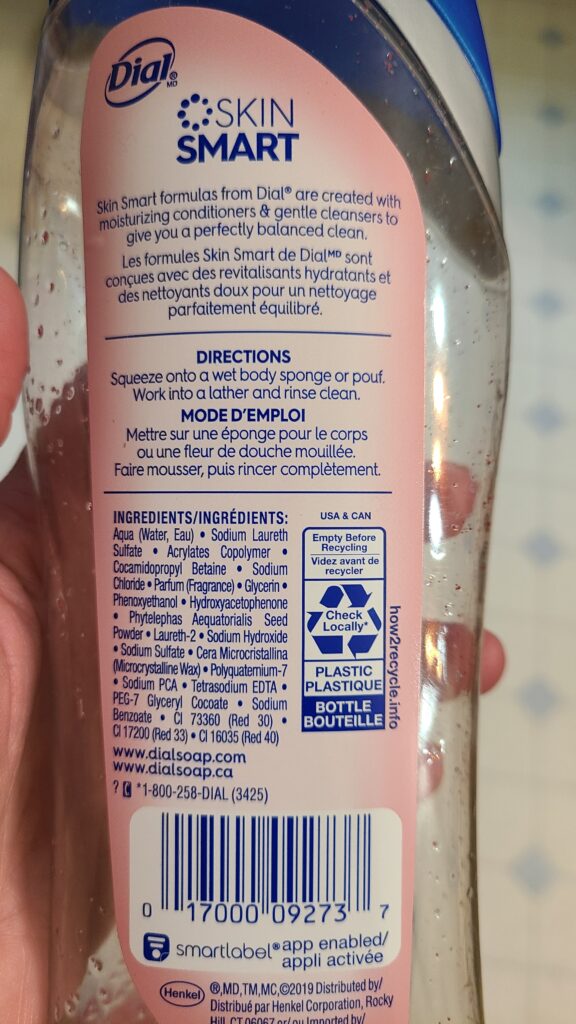Bar soap is a great alternative to liquid soap for daily washing. Whether you are looking out for your health, your pocketbook, or the planet, you can’t go wrong with bar soap. Discover all the reasons to make the switch today and together, let’s raise the bar.

This post contains affiliate links. As an Amazon Associate, I earn from qualifying purchases.
I have not always been a bar soap user.
I was converted later in life. I tried making soap a few years ago and after using it, I never went back to having liquid soap in my shower.
I loved the simplicity, luxurious lather, and peace of mind that my bar soap gave me. Part of this was because it was homemade (I knew exactly what was in it and how it was made), but that isn’t the only reason.
Generally speaking, bar soap is better for you and the environment. Let me explain.
1. Bar Soap Contains Fewer Chemicals
If you compare the ingredients list of bar soap to a typical body wash, on the bar soap you will find a shorter list with easier words to pronounce! Put simply, you are more likely to have fewer chemicals and more recognizable, natural ingredients in bar soap.
Take for example the last bottle of liquid soap I had on hand. I count 21 ingredients and most of them are synthetic chemical surfactants, fragrances, and colorants.

Some of these ingredients are known to be hazardous to health.
One example is Red 40 dye. According to Kobylewski and Jacobson (2012), this and several other commonly used colorants have been found to contain carcinogens.
In contrast, the bar soap that I make has only 4 ingredients which I obtain from my farm or the grocery store. I feel better about my family putting a combination of saponified coconut oil and olive oil, raw goat’s milk, and essential oils on our bodies than I do 21 chemical compounds.
2. Bar Soap is More Moisturizing
One of my children struggles with eczema and it has been hard to find skin care products that don’t exacerbate her condition. Unfortunately, many of the “soaps” that are marketed today are really detergents. These detergents contain surfactants that make the bubbles, but also dry out the skin!
One, very commonly used, surfactant is sodium lauryl sulfate (SLS). SLS may be listed under other similar names on ingredients lists such as sodium laureth sulfate or sodium lauryl ether sulfate. Leskur et al. (2019), acknowledge the skin irritation that occurs in sensitive individuals when SLS containing products are topically applied.
In my opinion, soap should be soothing, not irritating.
Unlike the detergent I had been buying at the store, the soap I make is a “true soap” containing lye (sodium hydroxide). Yes, lye (on its own) is caustic and irritating to the skin, but after being combined with fatty acids in the soap making process, it is inert. After reacting chemically, what we are left with is beneficial saponified oils.
In my soap, and others similar to it, it is the combination of plant-based oils and animal milk fats that help to lock in moisture. Goat’s milk is high in lactic acid, which has been found to have antioxidant properties as well as contribute to maintaining natural skin integrity and moisture levels (Algiert-Zielinska, Mucha, & Rotsztejn, 2019).
3. Bar Soap is More Cost Effective
Most people use more soap than necessary. According to Jergens.com (2020), all you need is a quarter-sized dollop of their body wash to clean yourself. But we all know from experience how easy it is to squeeze too much on your loofa, it comes out so fast!
If you want to stretch your dollar and increase the number of washes you get out of a soap purchase, go with bar soap. Bar soap will last longer and end up being more cost-effective in the long run.
To get even more life out of your bar soap, try using it with a soap-saver bag. Want the scoop on soap-saver bags? Read my other article here.
4. Bar Soap Creates Less Water Pollution
This one ties back in to reason number one to switch to bar soap. In the same way that we don’t want a bunch of chemicals on our bodies, we also don’t want them in our water systems.
When you take a shower, what goes down the drain eventually goes back into our environment. If you are using a chemically-laden soap, trace amounts of these substances may have negative impacts on humans, animals, and plant life down the road.
The COVID-19 pandemic has brought research on cleaning and disinfecting agents to the forefront. There is concern that the tremendous uptick in the use of chemical surfactants and antiseptics may have a negative impact on environmental water quality on a global scale (Juela Quintuna, 2020).
5. Bar Soap Creates Less Trash
What does liquid soap usually come in? A plastic bottle, right?
While the bottle may be recyclable, how many people do you think throw the empty bottle in the trash? I don’t know the answer, but I know that it is too many.
Statistics on recycling are saddening. While more people are recycling than ever before, there is still work to be done. According to the Environmental Protection Agency (EPA), plastics accounted for 35.7 million tons or 12.2 percent of all solid waste generated in 2018.
The good thing about bar soap is that there is usually less packaging and the packaging is more likely to be paper-based. Paper-based products are biodegradable and have a shorter-term environmental impact than plastics.
Raise the Bar
Bar soap is a great alternative to liquid soap for daily washing. Whether you are looking out for your health, your pocketbook, or the planet, you can’t go wrong with making the switch to bar soap!
If you are interested in trying the handcrafted goat milk soap that we make here on our farm, send us an email at [email protected]. We will give you our current scent list and shipping information.
Together, let’s raise the bar!
References:
Algiert-Zielinska, B., Mucha, P., & Rotsztejn, H. (2019). Lactic and lactobionic acids as typically moisturizing compounds. International Journal of Dermatology, 58(3),374-379. doi: 10.1111/ijd.14202
Environmental Protection Agency. (2018). National overview: Facts and figures on materials, wastes and recycling. Retrieved from https://www.epa.gov/facts-and-figures-about-materials-waste-and-recycling/national-overview-facts-and-figures-materials#recycling
Jergens. (2020). How to use body wash. Retrieved from https://www.jergens.com/en-us/blog/healthy-skin/how-to-use-body-wash/
Juela Quintuna, D. M. (2020). Estimated impact of COVID-19 on water needs and volume and quality of wastewater. University of Cuenca- Department of Chemical Engineering, 1-18. http://dx.doi.org/10.2139/ssrn.3651551
Kobylewski, S. & Jacobson, M. (2012). Toxicology of food dyes. International Journal of Occupational and Environmental Health, 18(3), 220-246. doi. 10.1179/1077352512Z.00000000034.
Leskur, D., Bukic, J., Petric, A., Zekan, L., Rusic, D., Seslia Perisin, A., Petric, I., Stipic, M., Puizina-Ivic, N., & Modun, D. (2019). Anatomical site differences of sodium lauryl sulfate-induced irritation: Randomized controlled trial. British Journal of Dermatology, 181(1),175-185. doi: 10.1111/bjd.17633

Mother, farmer, author, and teacher by trade… She loves tending to things and watching them grow!
